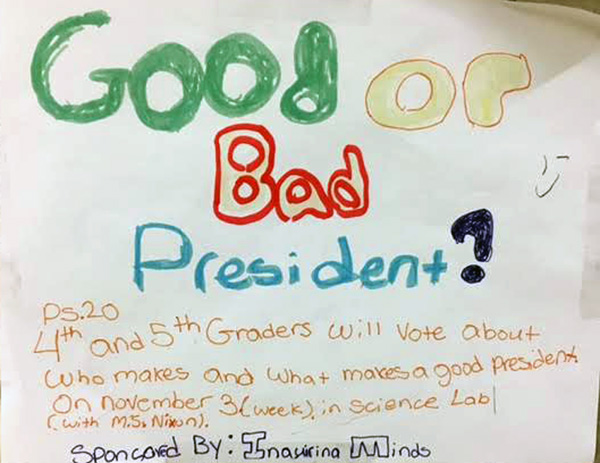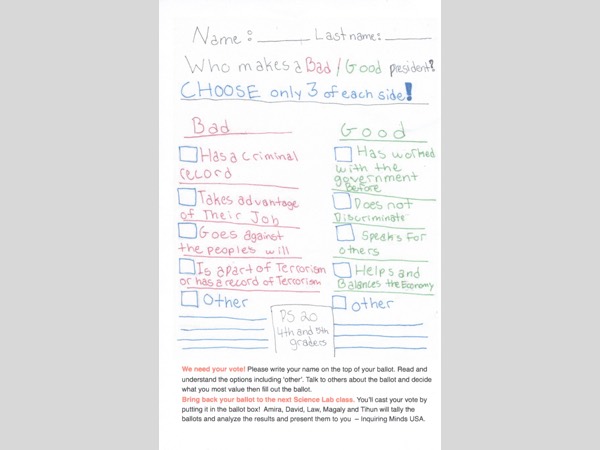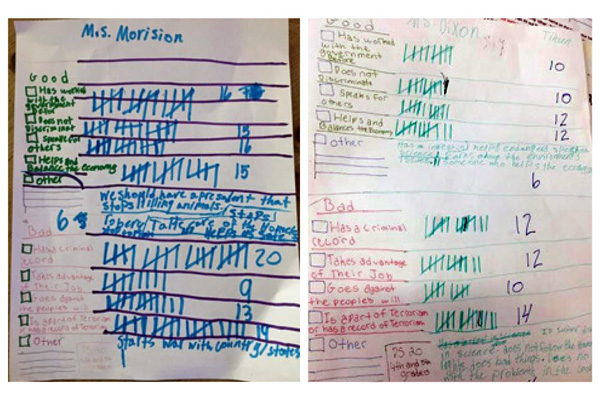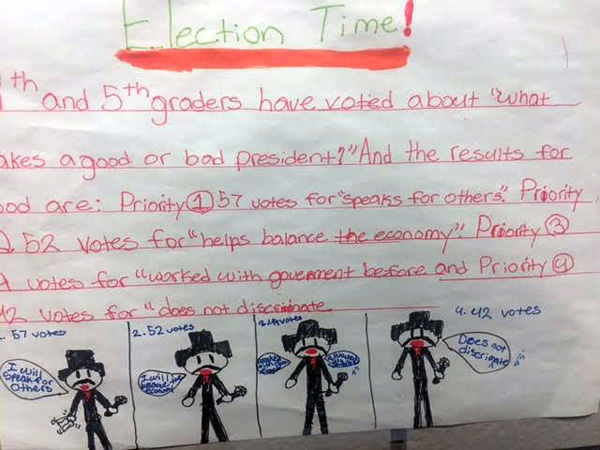Future voters: What makes a good president?
Before we leave the 2016 election season behind, we wanted to to check back in with the the elections run by 4th and 5th graders at PS 20 in Brooklyn in an innovative civic education program led by DK Holland
With the presidential election buzzing about the school and at home, the students decided to delay the vote on cafeteria improvements. Instead, they wanted to engage the school in the national conversation and hold their own presidential election. Their question to vote: What makes a good or bad president?
Next they had to choose the good and bad qualities everyone in the school would vote on. Naturally, that process was also a democratic one, with voting on each decision.
For good qualities, they chose ‘has worked with the government before’, ‘does not discriminate’, ‘speaks for others’, and ‘helps and balances the economy’.
For bad qualities, ‘has a criminal record’, ‘takes advantage of their job’, ‘goes against the people’s will’, ‘is a part of terrorism or has a history of terrorism’.
The students also voted to include a write-in option for each question, so that ideas they had not thought of could be voiced during the election
Equipped with the Field Guides, the students did an excellent job creating a usable ballot – none of the students had questions on what to do. The ballots were also color coded to distinguish the good questions (green) from the bad questions (red). And, they designed a colorful ballot box for each of the four classes.
They also had to make decisions about how to run their election for all 100 fourth and fifth graders. Since the students wanted to take precautions to avoid voter fraud and felt confidentiality was not necessary, they asked the students to fill in their name. This made it easier to run the election and streamlined the process. The ballots were handed out in each class and kids were given a few days to think about their response and encouraged to speak with their friends and family before forming opinions and casting their ballots.
The students were dedicated to running a free and fair election for their classes. They tallied the votes twice to make sure they were accurate and then made posters to broadcast the results.
The most important ‘good’ quality was ‘speaks for others’ and for ‘bad’ it was ‘has a criminal record. David, who is a co-treasurer of the group, proved the highest value of this exercise, “I want to know what is valued in a candidate most since I want to run for president of the United States one day!” All the students are now eager to vote on more issues – now that they realize they are being listened to, that their vote and voice matters.
Maggie visited DK and the students right after the election and joined them when they presented their results to the PTA. It was clear that the students had worked hard to understand difficult democratic concepts, such as the electoral college versus popular vote, and thought through all of the issues in election administration carefully. The PTA and the whole school community were excited about how engaged the students were in the election process.
Now that they have everyone’s full attention, the students are excited to run elections to decide how to improve the cafeteria, getting back to their original mission as the Cafeteria Busters. They will use the findings from these elections to persuade the school to start to make the improvements to the cafeteria, again proving that students should be seenand heard.

Maggie Ollove visiting PS20 with DK Holland, David, Amira, Law, Tihun, and Magaly





